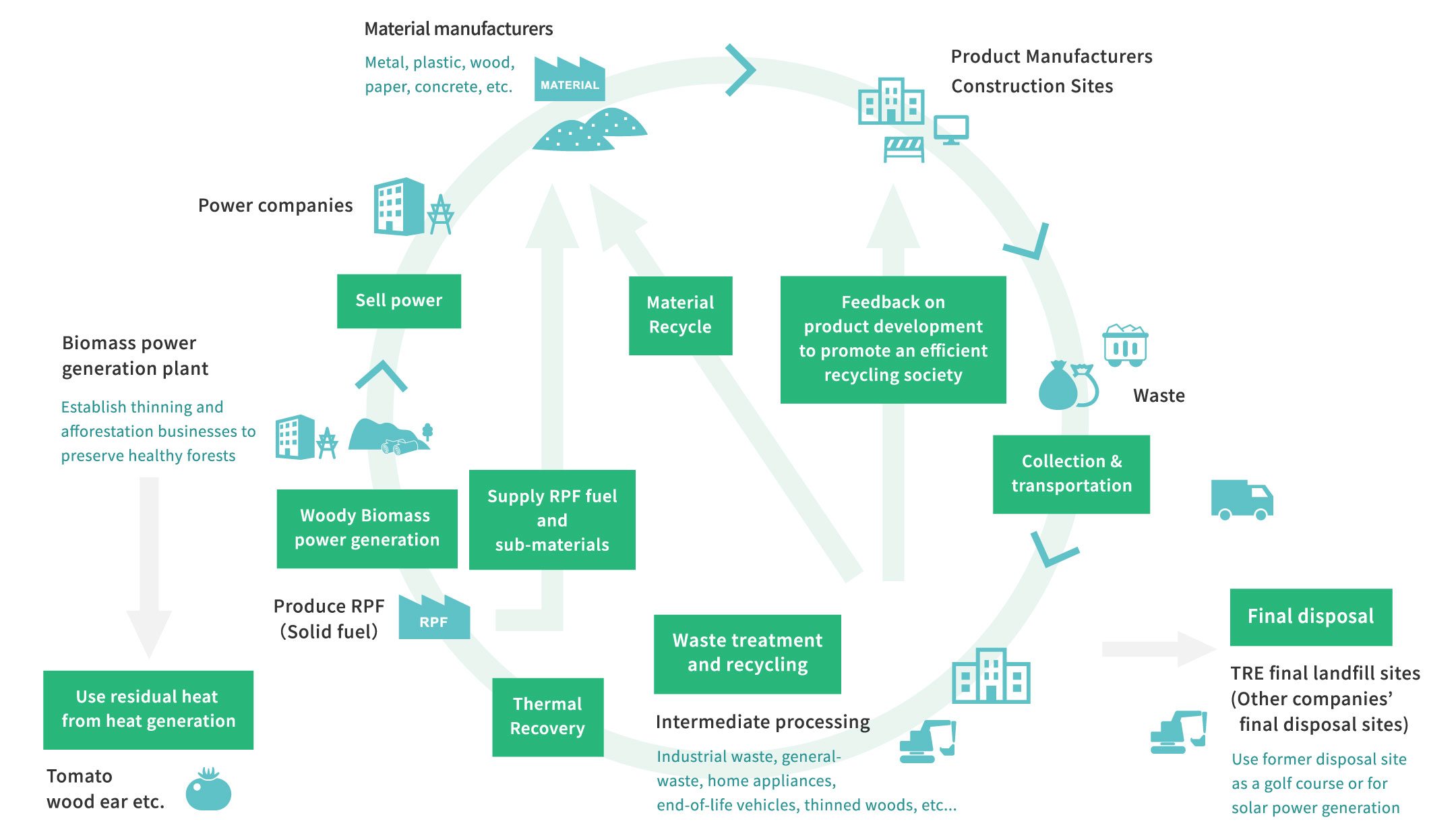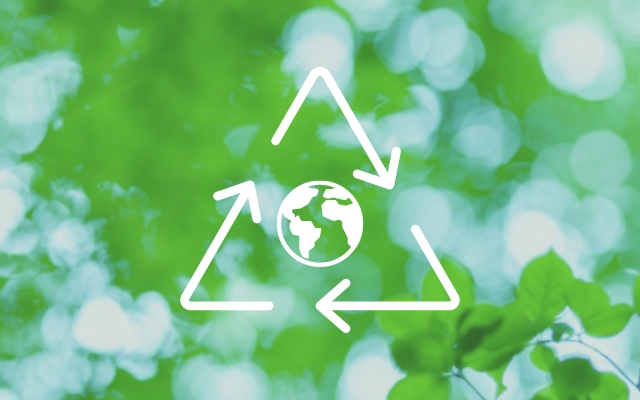Unlimited transformation of waste into resources using diverse technologies
As a member of the TRE Holdings Group, which upholds the corporate principle of “We are committed to the conservation of the global environment,” TAKEEI CORPORATION is focused on two missions: “to create an efficient recycling society” and “to create a carbon-neutral society.”
In an efficient recycling society, all waste is transformed into resources for recycling. It has been estimated that our current standard of living requires natural resources of 2.8 earths. While natural resources are limited, materials discarded as trash can be recycled and reused as resources.
We strive every day to recycle waste in order to produce easily recyclable products, collaborating with various industries.

TAKEEI Group offers diverse recycling services
As a Comprehensive Environmental Management Company, we always ensure harmony with nature and contribute to a sound material-cycle society by advancing the establishment of versatile recycling technologies and enhancement of facilities across our business locations, placing priority on coexistence with the local community.
TAKEEI has adopted a range of approaches for recycling in the intermediate treatment process of construction-related industrial waste.
By repeatedly classifying waste using machinery and heavy equipment, as well as human power, we improve the quantity and quality of recycling, while reducing the amount of waste landfilled at final disposal sites. After undergoing crushing, compression, and other required treatments according to their quality standards, recyclable wastes are shipped as recycled materials or energy resources. Certain waste materials such as waste gypsum board, concrete, scrap metal, and wood waste are recycled at specialized processing companies within the Group.
Recycling

The word “recycle” is defined in the 7th edition of Kojien* (an authoritative Japanese language dictionary) as “the practice of reusing unwanted items and waste to conserve resources and prevent environmental pollution.” Namely, it refers to the recovery of resources from products that have been disposed of and process them to use as resources and raw materials for new products.
Recycling is broadly divided into chemical recycling, material recycling (reuse as materials), and thermal recycling (reuse as heat).
*Kojien 7th edition, p. 3074 [Publisher: Iwanami Shoten, Publishers]
Chemical Recycling

In chemical recycling, waste materials such as waste plastics are chemically treated to reuse them as resources or raw materials for new products.
Chemical recycling frequently results in the creation of products that are completely different from the original resources.
Material Recycling
Material recycling is a process of turning waste into usable materials. TAKEEI owns dedicated recycling plants (companies) within the Group that are specialized in recycling specific materials such as gypsum board. The recycled materials are then shipped to raw material manufacturers and other users.
Please scroll horizontally to view the image below.
Waste gypsum board
Removing of foreign matter and adhering material
Cutting
Raw materials for gypsum board
![]()
Gypsum board
Debris and others
(concrete, etc.)
Removing of foreign matter
Crushing
Recycled crushed stone / Recycled sand
![]()
Paving material / Backfill material
Waste metals
Removing of foreign matter /
Sorting according to material contained
Cutting
Ferrous and non-ferrous metals
![]()
Copper sheet, shaped steel, steel bars, non-iron products
Wastepaper
Removing of foreign matter /
Sorting according to material contained
Compressing
Raw materials for paper manufacturing
![]()
Cardboard
Waste plastic
Removing of foreign matter /
Sorting according to material contained
Crushing and compressing
Raw materials for recycled plastic
![]()
Plastics products,
PVC pipe
![]()
Cement raw fuel, Deoxidizing materials for Blast Furnace, etc.
Wood waste
Crushing and removing of foreign matter /
Sorting according to material contained
Crushing
Wood chips
![]()
Paper products,
Particleboard, etc.
Thermal Recovery (Thermal Recycling)
Thermal recovery is a process designed not only to incinerate waste, but also collect and utilize the heat energy generated by the incineration.
This includes waste power generation, use for heating and hot water supply in facilities, heated swimming pools, district heating systems, as well as power generation and conversion to fuel for power generation and cement manufacturing. Thermal recovery is also sometimes referred to as heat recovery and heat utilization.
Please scroll horizontally to view the image below.
Wood waste
Crushing and removing of foreign matter / Sorting according to material contained
Crushing (sorting)
Wood chips
![]()
Woody biomass power generation
Combustibles (wastepaper, waste plastics, etc.)
Crushing and removing of foreign matter
Compressing
Fuel for power generation, conversion to cement raw fuel
![]()
Waste power generation, Cement raw fuel
